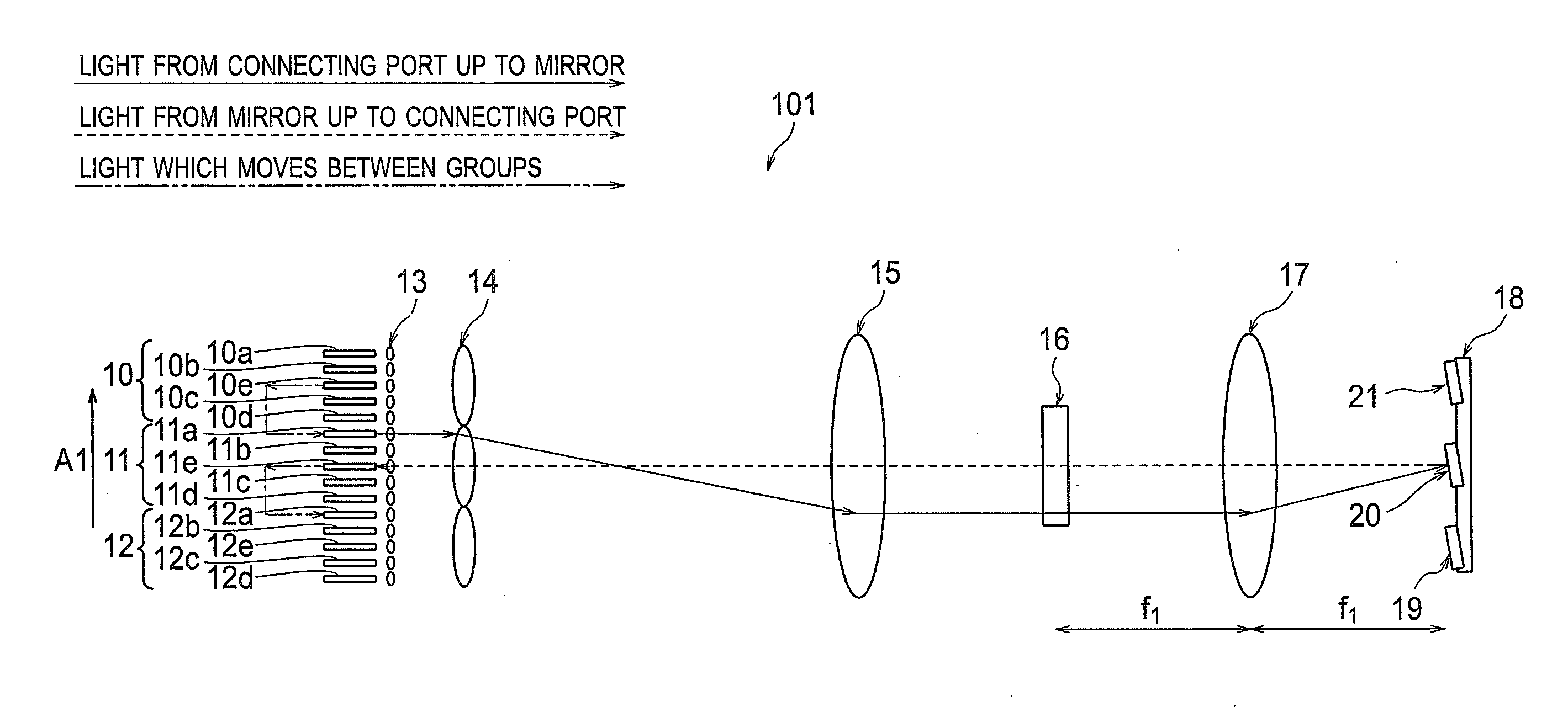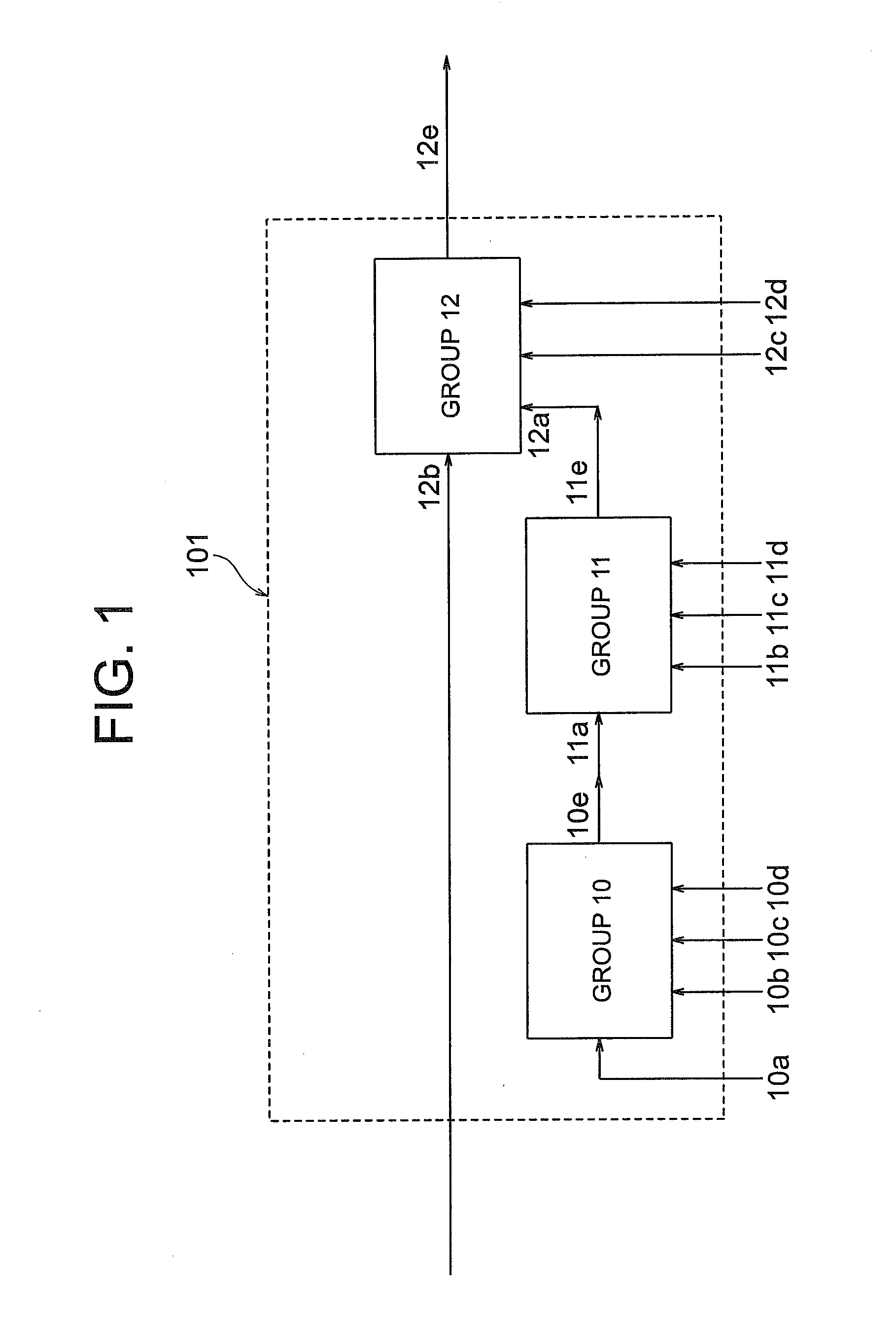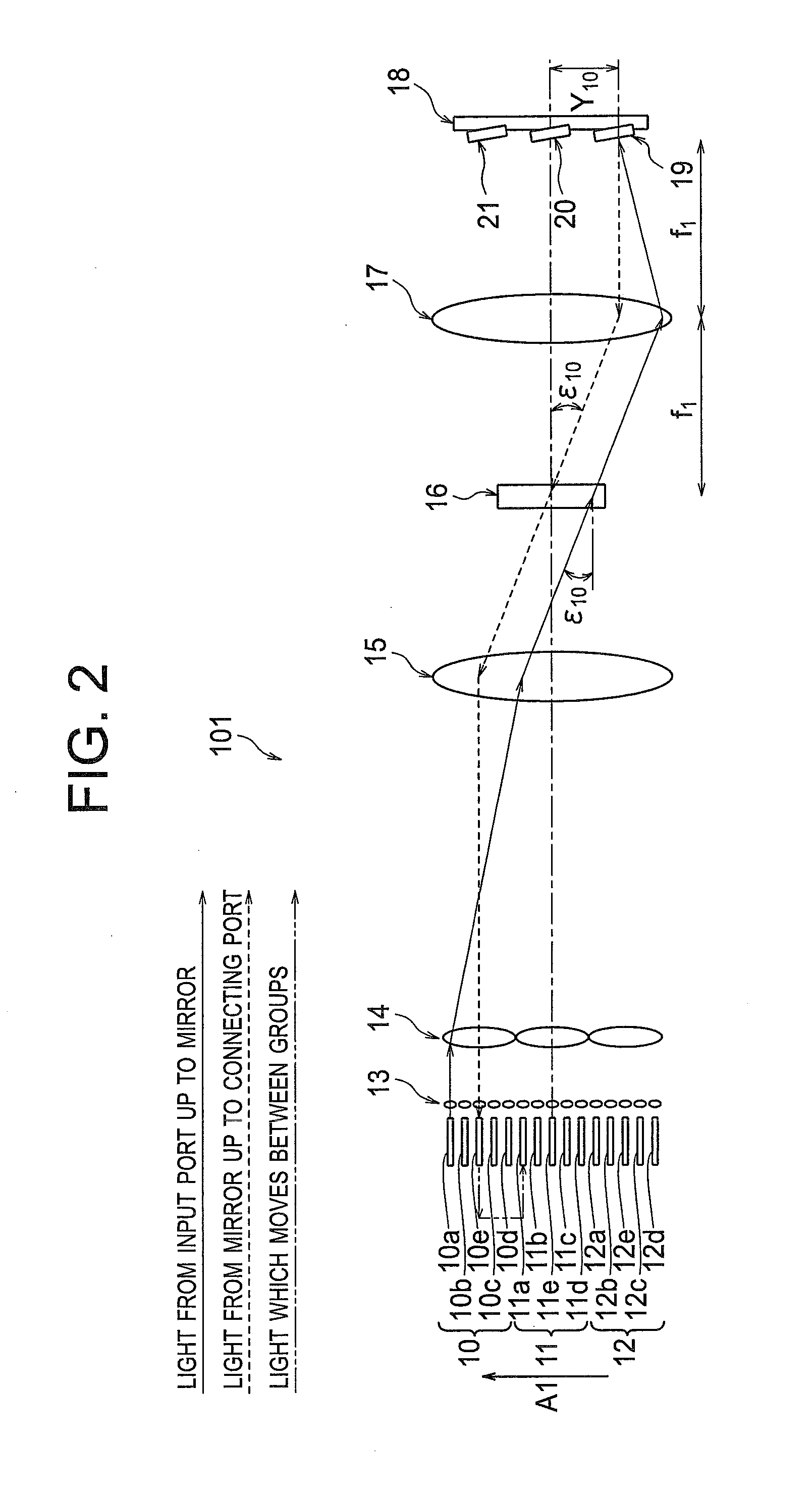Wavelength selective switch
a selective switch and wavelength technology, applied in the field of wavelength selective switches, can solve the problems of increasing the necessary cost of an overall apparatus, increasing the weight of the overall apparatus, and increasing the overall size of the overall apparatus
- Summary
- Abstract
- Description
- Claims
- Application Information
AI Technical Summary
Problems solved by technology
Method used
Image
Examples
first embodiment
[0071]FIG. 1 is a block diagram showing a concept of a wavelength selective switch 101 according to a first embodiment of the present invention. The wavelength selective switch 101 includes 10 input ports 10a, 10b, 10c, 10d, 11b, 11c, 11d, 12b, 12c, and 12d, and an output port 12e. At an interior of the wavelength selective switch 101, a connecting port 10e of a group 10 and a connecting port 11a of a group 11 are connected mutually, and a connecting port 11e of the group 11 and a connecting port 12a of a group 12 are connected mutually. The groups 10, 11, and 12 form an input output portion.
[0072]In FIG. 1, the 10 input ports and the output port indicate one N×1 wavelength selective switch (N=10). However, an alignment and the number of the input ports, the output ports, and the connecting ports is not restricted to an alignment and the number of ports in FIG. 1.
[0073]An example in which, light which has been input from the input port 10a is output to the output port 12e, will be d...
second embodiment
[0130]For a wavelength selective switch 102 according to a second embodiment of the present invention, in the arrangement of the wavelength selective switch 101 according to the first embodiment shown in diagrams from FIG. 1 to FIG. 12, |ε10| is let to be |ε12| (|ε10|=|ε12|), and ε10 is selected such that X11a . . . , X10b . . . , and X12b are same mutually. The rest of the arrangement is same as in the wavelength selective switch 101 according to the first embodiment. Same reference numerals are assigned to members which are same as in the first embodiment, and the description in detail of such members is omitted.
[0131]Here, FIG. 13 is a side view showing a structure of the wavelength selective switch 102. FIG. 14 is a top view showing the structure of the wavelength selective switch 102. FIG. 15 is a diagram in which, the dispersive element 16 and the second lens 17 are shown in an enlarged form. FIG. 13 shows a path of light since the light is input from the input port 10a till t...
third embodiment
[0139]FIG. 17 is a top view showing a structure of a wavelength selective switch 103 according to a third embodiment of the present invention.
[0140]The wavelength selective switch 103 is an application example when a reflecting lens 25 is used instead of the first lens 15 and the second lens 17 of the wavelength selective switch 101 according to the first embodiment shown in diagrams from FIG. 1 to FIG. 12. Moreover, a reflection dispersive element 26 is used instead of the dispersive element 16 of the first embodiment. The rest of the structure is similar to the structure of the wavelength selective switch 101 according to the first embodiment, and same reference numerals are used for members which are same as in the first embodiment.
[0141]In the wavelength selective switch 103 according to the third embodiment, for simplifying the description, the reflecting lens 25 has been used in common for the first lens 15 and the second lens 17. However, the use of the reflecting lens 25 is ...
PUM
 Login to View More
Login to View More Abstract
Description
Claims
Application Information
 Login to View More
Login to View More - R&D
- Intellectual Property
- Life Sciences
- Materials
- Tech Scout
- Unparalleled Data Quality
- Higher Quality Content
- 60% Fewer Hallucinations
Browse by: Latest US Patents, China's latest patents, Technical Efficacy Thesaurus, Application Domain, Technology Topic, Popular Technical Reports.
© 2025 PatSnap. All rights reserved.Legal|Privacy policy|Modern Slavery Act Transparency Statement|Sitemap|About US| Contact US: help@patsnap.com



